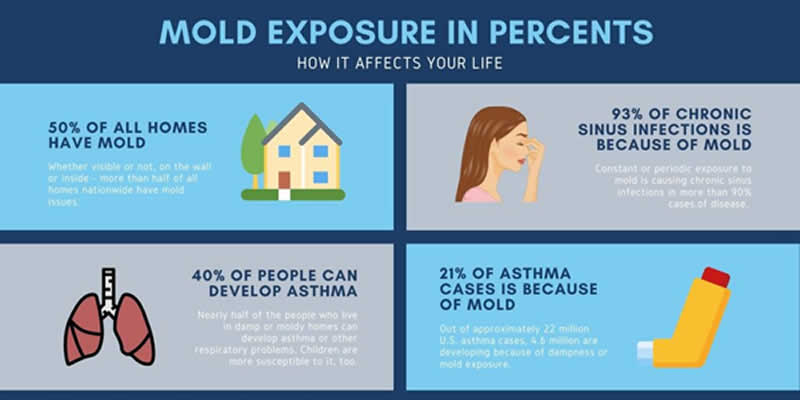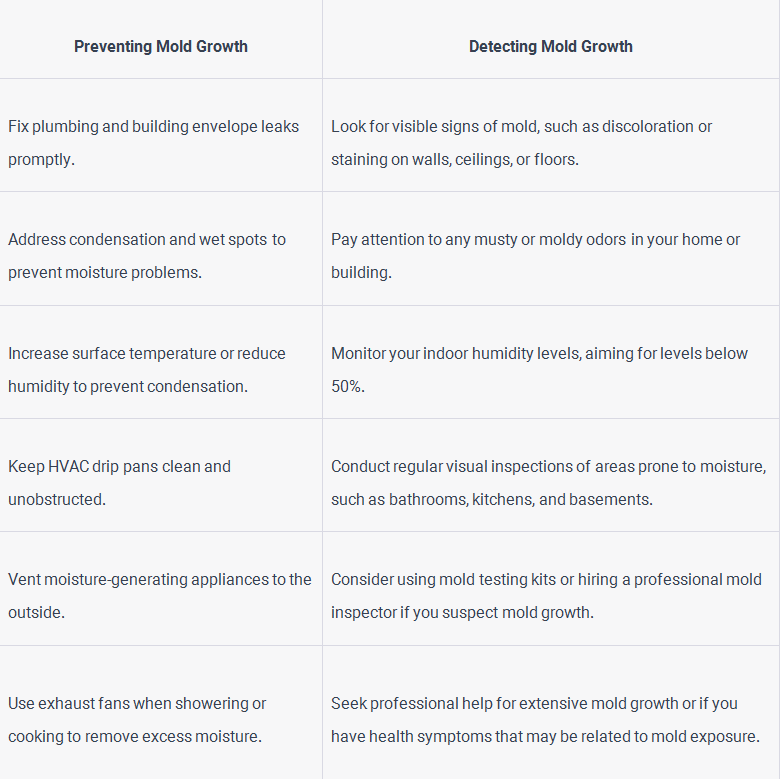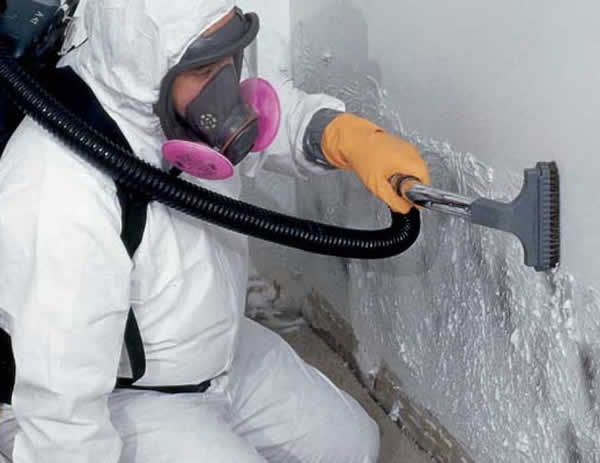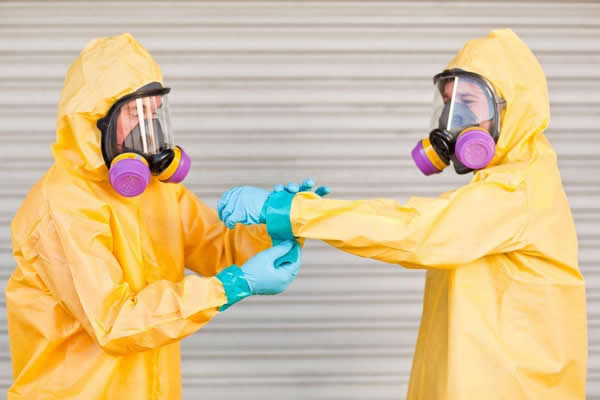Have you ever noticed a musty smell in your home or workplace? Or perhaps you have experienced unexplained health issues such as allergies or respiratory problems that seem to persist no matter what you do.
These could be signs of mold growth, a common problem that can have serious consequences for your health and well-being.
In this article, we will explore the importance of prioritizing professional mold remediation for long-term wellness.
By understanding the risks associated with mold and the benefits of professional remediation, you can ensure a safe and healthy environment for yourself and your loved ones.
Health Implications of Mold Exposure

Mold exposure can cause health effects and allergic reactions. When you come into contact with mold, whether through inhalation, ingestion, or skin contact, it can trigger a range of health problems.
These can include respiratory issues like coughing, wheezing, and shortness of breath, as well as nasal congestion, throat irritation, and eye irritation. Some individuals may also experience skin rashes or hives.
For people with existing respiratory conditions, such as asthma or allergies, mold exposure can exacerbate their symptoms and lead to more frequent and severe attacks.
In rare cases, exposure to certain types of mold can even result in more serious health conditions, such as fungal infections or toxic reactions.
Preventing and Detecting Mold Growth
To prevent and detect the growth of mold, you should promptly address plumbing and building envelope leaks. Mold can grow on organic substances with moisture and oxygen, so controlling moisture indoors is crucial.
Here are some key steps you can take to prevent and detect mold growth:

Developing an Effective Remediation Plan
When developing an effective remediation plan, it's important to assess the size and type of the moisture problem or mold growth. This will help determine the appropriate steps to take for successful remediation.
Here are three key considerations to keep in mind:
- Identify the extent of the mold or moisture problem: Understanding the size of the affected area is crucial for planning the remediation process. Is the mold growth limited to a small corner or has it spread extensively? Assessing the severity and scope of the problem will guide your approach.
- Determine the source of moisture: Addressing the underlying cause of mold growth is essential to prevent future issues. Is there a leaky pipe or a high humidity level? By identifying and resolving the source of moisture, you can effectively eliminate the conditions that promote mold growth.
- Consider the health risks and safety precautions: Mold remediation involves handling potentially hazardous materials. Evaluate the health effects associated with the mold and take necessary precautions to protect yourself and others during the remediation process. This may include wearing personal protective equipment (PPE) and implementing containment measures.
If you're dealing with a mold problem, it's important to consult with mold remediation specialists in Southampton or any area that you're currently in. These experts have the knowledge and experience to handle potentially hazardous materials associated with mold growth and prevent future recurrence.
Effective Methods for Mold Cleanup
One effective method for cleaning up mold is using wet vacuuming to remove water from floors and hard surfaces. This method is particularly useful after water damage or flooding, as it helps eliminate excess moisture that can contribute to mold growth.

Wet vacuuming involves using a vacuum cleaner that is specifically designed to handle wet surfaces. By sucking up the water, the vacuum helps to dry out the affected area and prevent further mold growth.
When using a wet vacuum for mold cleanup, it is important to follow proper safety precautions. Make sure to wear personal protective equipment such as gloves, goggles, and a respiratory mask to protect yourself from mold spores and other contaminants.
Additionally, ensure that the vacuum is equipped with a HEPA filter, which can effectively trap mold spores and prevent them from being released back into the air.
In addition to wet vacuuming, it is also important to address the underlying cause of the water damage to prevent future mold growth. This may involve fixing plumbing leaks, improving ventilation, or addressing any other sources of excess moisture.
Importance of Personal Protective Equipment and Moisture Control
Using proper personal protective equipment, such as gloves and goggles, is essential for ensuring safety during mold cleanup. Mold exposure can cause health effects and allergic reactions, so protecting yourself is crucial.

Here are three reasons why personal protective equipment (PPE) and moisture control are important during mold remediation:
- PPE prevents contact with mold and eliminates the risk of skin exposure. Wearing disposable protective clothing is necessary to avoid transferring mold and coming into direct contact with it.
- Containment is crucial to prevent further contamination. By using double layers of polyethylene and a decontamination chamber or airlock, you can effectively isolate the affected area and stop mold from spreading.
- Moisture control is key to mold control. Drying out the affected area and addressing any underlying moisture problems will help prevent future mold growth.
Conclusion
Prioritizing professional mold remediation is essential for ensuring long-term wellness.
Mold exposure can have serious health effects, making it crucial to prevent and detect mold growth in buildings.
By developing an effective remediation plan and using appropriate methods for cleanup, professional remediators can effectively remove mold and water-damaged areas.
It is important to use personal protective equipment and implement moisture control strategies to ensure the safety and well-being of occupants.
So, don't hesitate to prioritize professional mold remediation for a healthy living environment.
FAQs
Q: How long does it typically take for mold to grow after a water damage incident?
It typically takes mold a few days to a week to grow after a water damage incident. Promptly addressing the water problem and drying out the affected area can help prevent mold growth and protect your long-term wellness.
Q: Are there any long-term health effects associated with mold exposure?
Yes, there can be long-term health effects associated with mold exposure. It can cause allergies, respiratory issues, and other health problems.
Q: What are some common signs and symptoms of mold exposure?
Common signs and symptoms of mold exposure include respiratory issues like coughing and wheezing, allergic reactions such as sneezing and itching, as well as headaches and skin irritation.
Q: Can mold remediation be done by homeowners or is it necessary to hire a professional?
Yes, homeowners can attempt mold remediation, but hiring a professional is necessary for extensive mold growth or hidden mold. Professionals have the expertise, equipment, and protective measures to ensure effective and safe remediation.
Q: Is it possible for mold to come back after remediation?
Yes, mold can come back after remediation if the underlying moisture problem is not addressed. Hiring a professional ensures thorough remediation and proper moisture control to minimize the risk of mold returning.
